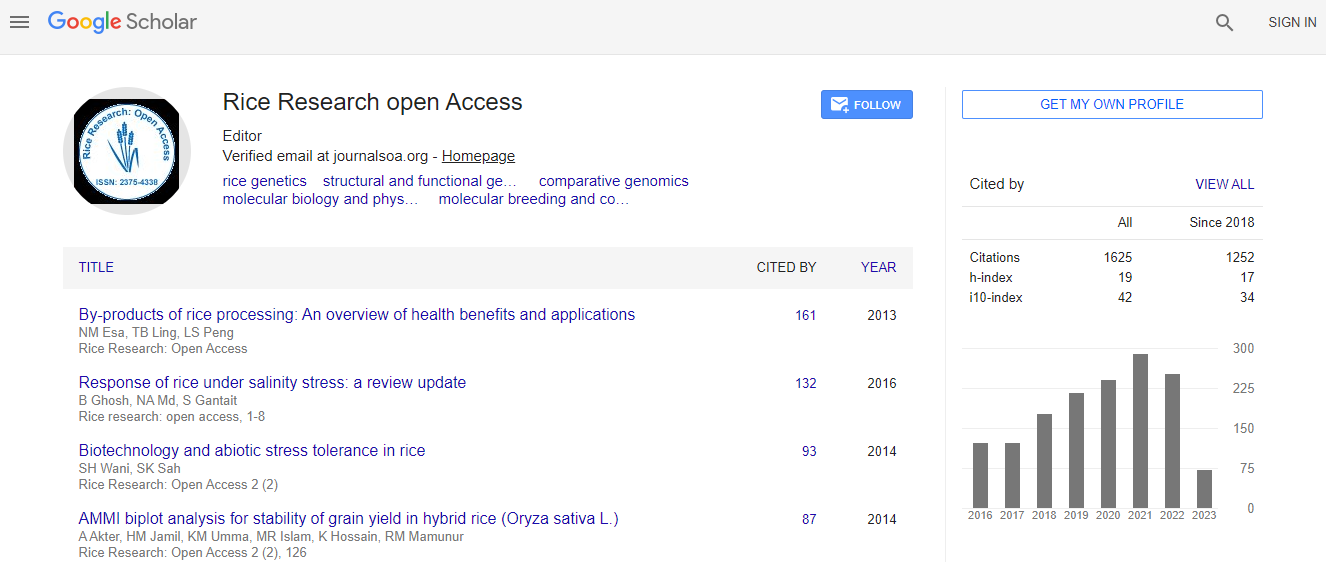Review Article
By-products of Rice Processing: An Overview of Health Benefits and Applications
| Norhaizan Mohd Esa1,2*, Tan Bee Ling1 and Loh Su Peng1,2 | ||
| 1Department of Nutrition and Dietetics, Universiti Putra Malaysia, Malaysia | ||
| 2Laboratory of Molecular Biomedicine, Universiti Putra Malaysia, Malaysia | ||
| Corresponding Author : | Norhaizan Mohd Esa Department of Nutrition and Dietetics Universiti Putra Malaysia, Malaysia Tel: +603-89472427 fax: +603-89426769 E-mail: nhaizan@medic.upm.edu.my |
|
| Received June 20, 2013; Accepted August 09, 2013; Published August 15, 2013 | ||
| Citation: Esa NM, Ling TB, Peng LS (2013) By-products of Rice Processing: An Overview of Health Benefits and Applications. J Rice Res 1:107. doi: 10.4172/jrr.1000107 | ||
| Copyright: © 2013 Esa NM, et al. This is an open-access article distributed under the terms of the Creative Commons Attribution License, which permits unrestricted use, distribution, and reproduction in any medium, provided the original author and source are credited. | ||
Related article at Pubmed Pubmed  Scholar Google Scholar Google |
||
Abstract
Our study was centred on the increasing literature associated with rice by-products and main components, especially those intended to combat cancer, improve plasma lipid levels or control the blood glucose levels. Rice byproducts, such as rice straw, rice husks, rice bran, rice germ and broken rice, are extensively abundant agricultural wastes from the rice industry, and the percentage of their production depends on the milling rate and type of rice. Among all rice by-products, rice bran has been extensively studied. It contains phytochemicals such as γ-oryzanol, vitamin E, mainly tocotrienols and dietary fibre. This paper reviews the existing literature on the potential role of rice by-products, focusing not only on the role of rice bran but also on the roles of other rice by-products, such as rice germ and rice husk, in the management of the diseases, investigating their various potential uses in the food industry and all possible properties that may contribute to these effects.

 Spanish
Spanish  Chinese
Chinese  Russian
Russian  German
German  French
French  Japanese
Japanese  Portuguese
Portuguese  Hindi
Hindi 
